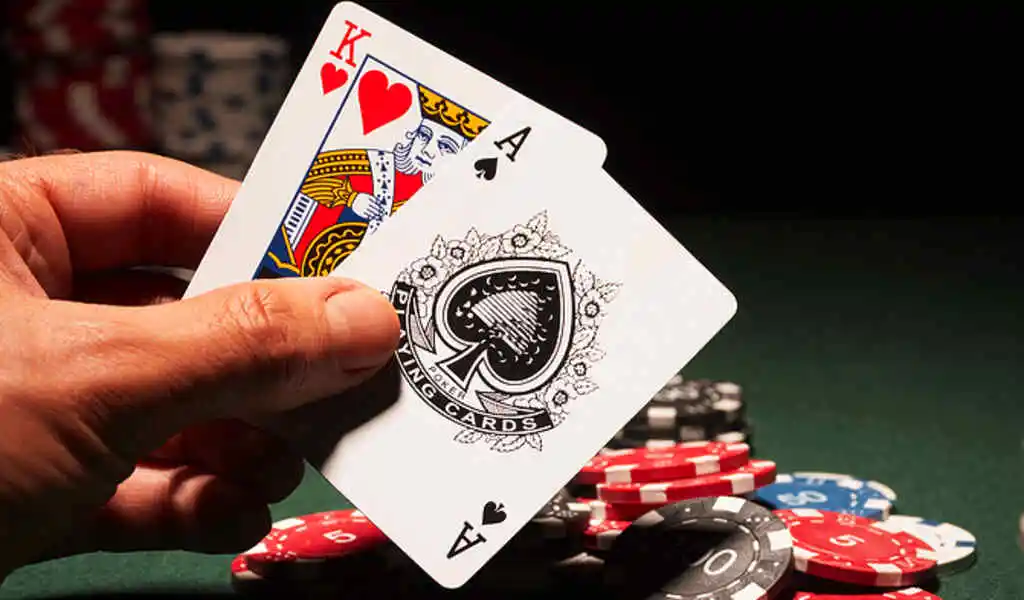Introduction
How To Divide Poker Chips $20 Buy In: When hosting a poker game with a $20 buy-in, it’s essential to properly divide the poker chips to ensure a fair and enjoyable gaming experience for all players. The distribution of poker chips should take into account factors such as the number of players, the desired starting chip stacks, and the structure of the poker game being played. By carefully dividing the chips, you can create balanced chip stacks that allow for strategic play and comfortable chip denominations.
This ensures that players have enough chips to make bets, raises, and bluffs while maintaining a suitable pace of play. A well-divided chip distribution also helps in tracking the pot size and managing the betting rounds effectively. In this guide, we will explore a recommended method for dividing poker chips for a $20 buy-in game, allowing you to host a smooth and enjoyable poker experience for you and your friends.

How do you divide poker chips?
For most home game tournaments, a solid option is to have each player start with 3,000 chips using the following distribution:
- 8 Red $25 Chips.
- 8 White $100 Chips.
- 2 Green $500 Chips.
- 1 Black $1,000 Chips.
When dividing poker chips among players, the specific distribution can vary based on factors such as the number of players, the desired starting chip stacks, and the structure of the poker game being played. However, a common method for dividing poker chips is as follows:
1. Determine the chip denominations: Decide on the denominations of the poker chips you will be using. Common denominations include $1, $5, $25, $100, and higher, depending on the stakes of the game.
2. Establish starting chip stacks: Determine the number of chips each player will start with. This can be a uniform stack or adjusted based on factors such as the player’s experience or preferences.
3. Distribute the chips: Start by giving each player an equal number of chips from each denomination. For example, if there are $1, $5, and $25 chips, distribute a certain number of each to every player until all chips are distributed.
4. Adjust remaining chips: If there are any remaining chips after distributing equally, you can exchange them for higher denominations or add them to the pot for later use.
It’s important to note that the specific distribution method can vary depending on the game being played and the preferences of the players involved. Some variations may involve predetermined chip structures or specific tournament rules.
How many poker chips do you distribute?
Generally speaking, it is reasonable for each player to have about 50 chips to start with. A standard chip set usually contains about 300 chips, which come with 4 color variations: 100 pieces for white, 50 pieces for each of the other colors. This type of set is basically enough for 5-6 players to play comfortably.
The number of poker chips distributed to each player can vary depending on several factors, such as the number of players, the desired starting chip stacks, and the structure of the poker game being played. Here are some general guidelines for distributing poker chips:
1. Determine the total number of chips: Decide on the total number of chips you have available for the game. This can depend on factors like the stakes of the game and the desired chip denominations.
2. Define the starting chip stacks: Determine the desired starting chip stacks for each player. This can be influenced by the length of the game and the desired pace of play. Common starting stacks can range from 50 big blinds to 200 big blinds, or even more.
3. Calculate chip distribution: Divide the total number of chips by the number of players to calculate the average number of chips per player. Adjust the distribution based on the desired starting chip stacks. For example, if you have 500 chips and want each player to start with 100 chips, distribute 100 chips to each player.
It’s important to consider the specific poker game being played. Some games may require additional chips for antes, blinds, or higher denominations. Adjustments can be made accordingly to ensure an appropriate distribution that allows for smooth gameplay and reasonable chip stacks for each player.
How many poker chips do you need for 20 players?
Poker Chips
Generally, you will want about 50-75 chips for each player. If you want to have a 20 person tournament you will need approximately 1000-1500 chips of the right color mix.
The number of poker chips needed for 20 players can vary depending on factors such as the desired starting chip stacks and the structure of the poker game being played. However, as a general guideline, you would typically need a set of poker chips with a total count of around 500 to 1000 chips for a game with 20 players.
To calculate a rough estimate, you can use the following guideline:
1. Determine the desired starting chip stacks: Decide on the desired starting chip stack for each player. This can depend on factors such as the stakes of the game and the desired length of play. A common starting stack is around 50 to 100 big blinds.
2. Calculate the total number of chips needed: Multiply the number of players (20) by the desired starting chip stack for each player. For example, if each player starts with 100 chips, you would need a total of 2000 chips (20 players x 100 chips).
3. Adjust for additional chips: Consider if you need additional chips for factors such as blinds, antes, or higher denominations. It’s advisable to have extra chips available to accommodate any potential chip-up situations or rebuys.
Keep in mind that these numbers are general estimates, and the specific distribution and chip denominations can vary based on personal preferences and the specific poker game being played.

What is the ratio of poker chips?
For example, if you are assembling a set of four chip values of $1, $5, $10, and $25, the number of chips by ratio should be 4:3:2:1. For a set of 500 poker chips, for example, you should have 200, 150, 100, and 50 chips in white, red, blue and green, respectively.
The ratio of poker chips refers to the proportion of different chip denominations used in a poker game. The specific ratio can vary based on factors such as the stakes of the game and the desired chip distribution. However, a common ratio used in many poker games is the “standard” or “traditional” chip ratio, which typically consists of the following:
1. White chips: 1 unit (e.g., $1 or 1 point)
2. Red chips: 5 units (e.g., $5 or 5 points)
3. Blue chips: 10 units (e.g., $10 or 10 points)
4. Green chips: 25 units (e.g., $25 or 25 points)
5. Black chips: 100 units (e.g., $100 or 100 points)
This ratio provides a gradual increase in value as you move up to higher denomination chips. It allows for easy calculation of bets, raises, and chip exchanges during the game.
However, it’s important to note that the specific ratio used can vary based on personal preferences, the stakes of the game, and the desired chip distribution. Some games may also introduce additional chip denominations, such as purple (500 units) or yellow (1000 units), for higher stakes or special tournament situations.
How are poker chips numbered?
Values assigned to chips are generally the same across most poker rooms: $1, $5, $10, $20 or $25, $100, $500, and $1,000. For higher stakes, there are usually $5,000 and $1,000 chips on hand, with some as high as $25,000 or $100,000.
Poker chips are typically not numbered with specific values or denominations. Instead, they are designed with distinct colors and markings to represent different denominations or point values. The markings on the chips can vary depending on the manufacturer, but common methods include:
1. Edge Spots: Many poker chips have colored spots along the edge of the chip, which indicate their value or denomination. Each color represents a specific value, such as red for $5, green for $25, or black for $100.
2. Molded Inlays: Some poker chips have molded inlays or decals on the face of the chip that display the denomination. These inlays can be in the form of text, numerical values, or graphical symbols.
3. Custom Designs: In certain cases, custom-designed poker chips may have unique markings or logos specific to a particular casino, event, or game. These markings are often used to differentiate the chips and prevent counterfeiting.
It’s important to note that the specific markings and colors used on poker chips can vary between different casinos, manufacturers, or poker tournaments. It’s always advisable to familiarize yourself with the specific chip values and colors being used in a particular game or setting to avoid confusion during play.
How can I determine the appropriate starting chip stack for a $20 buy-in poker game?
To determine the appropriate starting chip stack for a $20 buy-in poker game, you can follow a general guideline based on the desired starting big blinds. Here’s a suggested approach:
1. Determine the small blind: Decide on the amount of the small blind for your game. This can vary based on your preference and the stakes you want to play.
2. Determine the desired starting big blinds: It’s common to start with a stack of around 20 to 25 times the small blind. For example, if the small blind is $1, a starting stack of $20 to $25 would be appropriate.
3. Calculate the starting chip stack: Multiply the small blind by the desired number of big blinds. For instance, if the small blind is $1 and you want 20 big blinds, the starting chip stack would be $20 (20 x $1) or $25 (25 x $1), depending on your preference.
Remember, the number of big blinds you choose for the starting stack can vary based on personal preference and the desired length and pace of the game. Adjustments can be made if you want a faster or slower structure.
Additionally, consider having extra chips available for rebuys or chip-ups throughout the game to accommodate players who may lose their initial stack or to adjust chip values as blinds increase during the game.
What are some recommended chip denominations to use when dividing poker chips for a $20 buy-in game?
When dividing poker chips for a $20 buy-in game, it’s recommended to use chip denominations that provide flexibility for betting and accommodate the desired stakes. Here are some commonly used chip denominations for a $20 buy-in game:
1. $1 chips: These are useful for smaller bets, such as the small blind or minimum bets. Distribute a sufficient number of $1 chips to allow for multiple small bets and easy incrementing of bets.
2. $5 chips: These are suitable for medium-sized bets and can be used to represent increments in the betting rounds. Include an ample number of $5 chips to accommodate raises and larger bets.
3. $25 chips: These higher denomination chips can be used for larger bets, such as big blinds, substantial raises, or all-in bets. Including a few $25 chips ensures that players have the option to make bigger bets when needed.
The specific quantity of chips in each denomination will depend on factors such as the number of players and the desired chip distribution. A common distribution for a $20 buy-in game could be a mix of $1 chips (around 40-60 chips), $5 chips (around 8-12 chips), and a few $25 chips (2-4 chips).
Remember to adjust the quantities based on the preferences and dynamics of your specific game. Having a mix of chip denominations allows for varied betting options and creates an engaging poker experience for all players.
Is there a specific ratio or guideline I should follow to ensure a fair distribution of chips among players in a $20 buy-in poker game?
While there is no fixed ratio or guideline for chip distribution in a $20 buy-in poker game, you can follow a general approach to ensure a fair distribution among players. Here are some steps you can take:
1. Determine the desired starting chip stack: Decide on the number of chips each player will receive as their starting stack. This can be based on the desired number of big blinds or a specific value you want to assign.
2. Select chip denominations: Choose chip denominations that allow for easy betting increments and accommodate the desired stakes. Common denominations include $1, $5, and $25 chips. Determine the quantity of each denomination based on the desired chip distribution.
3. Divide the chips equally: Divide the total number of chips for each denomination equally among the players. Distribute an equal number of chips from each denomination to ensure fairness. For example, if there are 100 $1 chips, 50 $5 chips, and 10 $25 chips, and you have 5 players, each player would receive 20 $1 chips, 10 $5 chips, and 2 $25 chips.
4. Adjust for rebuys or chip-ups: Consider having additional chips available for rebuys or chip-ups as the game progresses. This ensures that players can replenish their chip stacks or accommodate higher blinds as the game evolves.
By following these steps, you can create a balanced chip distribution that allows for strategic betting, fair play, and an enjoyable poker experience for all participants.

Conclusion
Dividing poker chips for a $20 buy-in game requires careful consideration to create balanced chip stacks and promote a fair and enjoyable poker experience. By following a systematic approach and considering factors such as the number of players, desired starting chip stacks, and chip denominations, you can ensure that each player has an adequate supply of chips for betting, raising, and strategizing.
A suggested method for dividing poker chips in a $20 buy-in game is to establish a starting chip stack of 20 to 25 times the small blind. For example, if the small blind is $1, each player could start with a stack of $20 to $25 worth of chips. This provides enough chips for players to make meaningful bets and raises throughout the game.
To achieve this, you can use chip denominations such as $1, $5, and $25. Distribute a proportionate number of chips from each denomination to each player, ensuring that the total value of chips in each stack aligns with the desired starting chip stack. It’s also a good idea to have additional higher denomination chips available for rebuys or chip-ups as the game progresses.
By dividing the chips thoughtfully and ensuring a balanced distribution, you can create a level playing field for all participants. Remember to communicate the chip values clearly to all players and establish the blind structure and any additional rules before starting the game.
With proper chip division, you can enhance the excitement and strategic nature of your $20 buy-in poker game, setting the stage for a memorable and enjoyable evening of cards with your friends.










